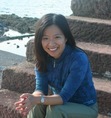Y.S. Lee's Blog
January 3, 2017
Farewell blog, hello newsletter
Hello there, I’m taking an indefinite blog hiatus. Feel free to wander around the blog archives (Things I Do, Things I Read, Things I Write). And if you’d like to keep in touch, please sign up for my newsletter.
Happy reading!
December 28, 2016
Oh, 2016
Hello, friends. Will you be glad to see the end of 2016? I know it’s a meme and everything, and I’m as worried as any other compassionate, equality-minded person about the future of the world. But personally, 2016 was a year of substantial, joyful growth and accomplishment. Here’s some of what happened to me.
Achievements
I wrote 140K words of Monsoon Season (I always think of this as my Tortoise Book because I first began working on it in June 2013. But if you strip away my many false starts, I actually began this iteration of the novel in January 2016. That’s decent going by any standard and excellent for a slower writer like me.)
I won an Ontario Arts Council grant
I was a juror for the Governor General’s Literary Awards
Candlewick Press re-issued the Agency novels with gorgeous new covers
I published my first short story (in A Tyranny of Petticoats)
I moderated my first panel at Kingston’s WritersFest
I stepped away from writing a non-fiction article that was causing me enormous stress
I established a regular and consistent home yoga practice
Our family survived a major home renovation with minimal stress
Experiences
I was invited to apply for a job in the creative writing program at a major university! (I didn’t.)
I went on my first artist’s retreat
I was nominated for the K M Hunter Artist Award (and am still working on the application)
I went to a party at Rideau Hall
I began to learn to skate
I tried mountain biking (and fell off, and got back on)
I went to my first led yoga class in eight years. It was terrific.
I’m about to start drafting goals for 2017 in my new bullet journal. Uncredited cover images trouble me so I’ve tracked down this year’s:
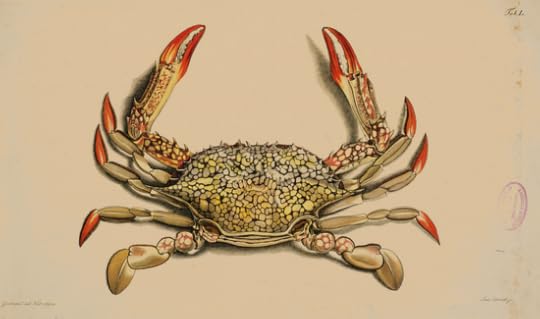 Johann Friederich Wilhelm Herbst (German, 1743-1807). Illustration of Cancer reticulatus from Versuch einer Naturgeschichte der Krabben und Krebse
Johann Friederich Wilhelm Herbst (German, 1743-1807). Illustration of Cancer reticulatus from Versuch einer Naturgeschichte der Krabben und KrebseLet us maneuver awkwardly into 2017 with our antennae on high alert, our pincers at the ready. Onwards! Or, possibly, sideways! Whichever suits you better, really. I’m with you.
P. S. This blog is going on hiatus. If you’d like to keep in touch, please sign up for my newsletter by clicking here, or using the form at the bottom of the page.
December 27, 2016
Placeholder
Hello, friends. I’ve been so festive that I forgot to make time to blog! Sorry for the lapse and I’ll have a fresh (final) post up on Thursday. Until then!
December 20, 2016
Inventing traditions
Hello, friends, and Happy Hanukkah, Happy Solstice, Happy Kwanzaa and Happy Christmas! Here’s an essay I wrote a few years ago about the surprisingly recent roots of three Christmas traditions. Hope you have a splendid week. I’ll be back on December 28 with my final blog post.
Quick: name three Christmas symbols.
If you’re like me, the first things you picture are Christmas trees, a red-suited Santa Claus (or in England, Father Christmas) and the now-endangered paper Christmas card. Did you know that all three are, in many ways, Victorian inventions or mashups of older traditions? If we were transported back to England, 1840, we’d be celebrating without any of these icons!
Take, for example, Christmas trees – the visual centrepiece of English-speaking living rooms. But the Christmas tree is actually a German tradition made popular in 1840s England by the royal family, who were of German origin. (Queen Victoria’s first language was German and her husband, Prince Albert, moved to England on his marriage at age 20). Victoria and Albert loved celebrating Christmas, and it was their enthusiasm that made the tree (Tannenbaum) popular in England. Oh, and those first Christmas trees were small, potted affairs placed on a table with the gifts beneath – like so (image from the BBC’s Ten Ages of Christmas):
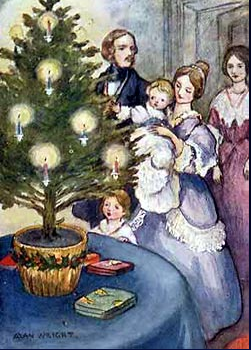
Victoria & Albert’s Christmas tree
Santa Claus and Father Christmas are part of a tangled tradition, too. St Nicholas was a 4th-century Christian bishop much admired for his generosity – far from an elf! We get “Santa Claus” from the Dutch name for St Nicholas. Santa’s red suit is a recent revision, too: until the 1880s, he generally wore a long, green cloak. The most popular images of Santa Claus in a red suit were done for a Coca Cola ad campaign in the 1930s, and they’re what we think of now, automatically. Even so… any bets on how long that red suit will endure?

What else would Santa drink?
And oh, the Christmas card: all that paper is harder to justify each year, but e-cards are so soulless. Yet paper Christmas cards are themselves an invention of convenience – a commercial product without much tradition behind it apart from not wanting to write a long letter. Sir Henry Cole commissioned this next image in 1843 and used it to print the first commercial Christmas card. Note the lack of Christian imagery, here – it’s a family drinking wine together – and even the kids are imbibing:
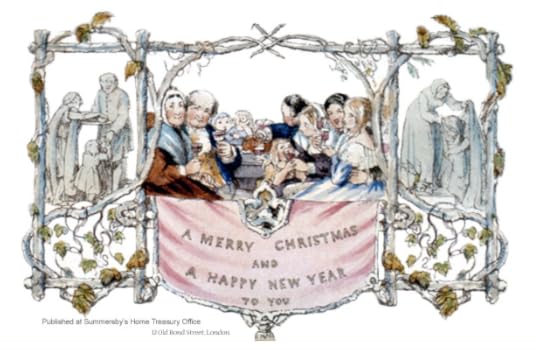
Henry Cole’s first commercial Christmas card
Although we tend to think of Christmas as something solid, a ritual that all Christian-influenced cultures have always celebrated, our modern Christmas is pretty new indeed. I find the flexibility and brash (relative) newness of these traditions exciting. For me, it means that Christmas is for adapting, for inventing, for personalizing for my family. How about you? And if you celebrate another holiday – Hanukkah, Kwanzaa, Solstice – how have your traditions evolved?
Either way, I hope your holidays are splendid.
December 13, 2016
Holiday books
Hello, friends. Want to see what books my children are getting for Christmas this year? This first is for my five-year-old (“five-and-a-HALF” she would correct me, if she could but read!).
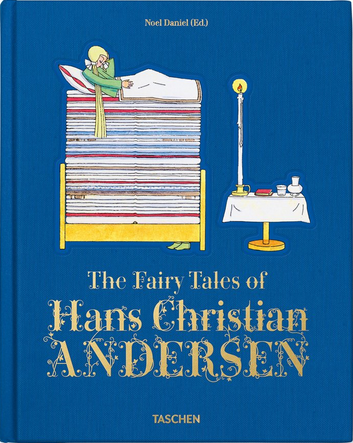
I chose the Taschen edition of The Fairy Tales of Hans Christian Andersen, edited by Noel Daniel, because the illustrations are so lovely and laden with history. Several months ago, I wrote about realizing that we’d accidentally skipped most fairy tales with our son, who’s now 8. He still finds them too dark and haunting, for the most part, but our daughter is a different creature entirely and I think she’s going to be delighted.
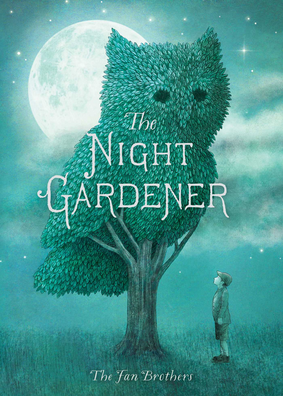
This summer, I fell in love with The Night Gardener, by Terry and Eric Fan, pretty much at first sight.
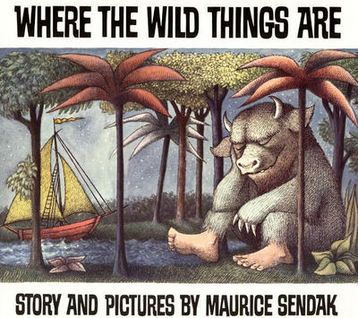
Maurice Sendak’s Where the Wild Things Are is one of my own childhood favourites. Our daughter is our own little Wild Thing and this feels just right for her.
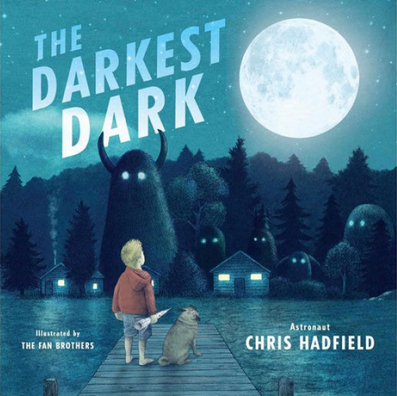
Our son is an exuberant Chris Hadfield fan, so The Darkest Dark was an obvious choice. I haven’t yet read it but it seems like a good choice for any child who’s afraid of the dark. And the luminous illustrations are by the Fan Brothers, who wrote The Night Gardener!
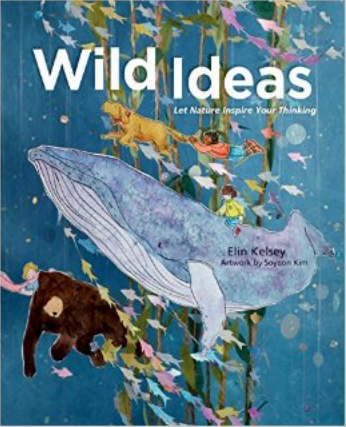
We already own and adore Elin Kelsey and Soyeon Kim’s You Are Stardust. I can’t recommend it highly enough and it’s my go-to birthday party gift for six- and seven-year-olds. It might seem odd to give picture books to children who read at a middle-grade level but at its core, You Are Stardust is a gorgeously illustrated introduction to ontology. We have high hopes for its sequel, Wild Ideas!
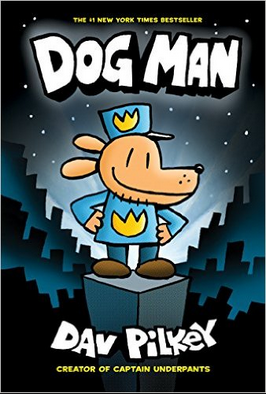
Our eight-year-old has asked Santa for Dav Pilkey’s Dog Man…
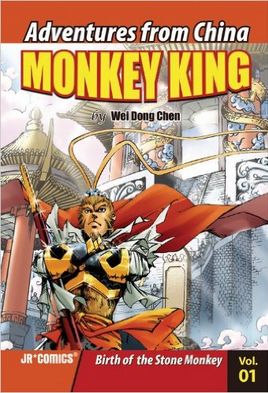
The Monkey King myths are another important part of my childhood: my grandfather read them to my brother and me, translating from Chinese as he went. I can’t do that for our children but I do like Wei Dong Chen’s re-telling of the story, Monkey King: Birth of the Stone Monkey. It might turn out to be a bit too scary but we’ll see.
And that’s our list. What are you reading and gifting?
P. S. This is one of my last posts before an indefinite blog hiatus. If you’d like to keep in touch, please sign up for my newsletter by clicking here, or using the form at the bottom of the page.
December 6, 2016
At Rideau Hall
Hello, friends! Last week, I attended the fanciest party of my life: the Governor General’s Literary Awards gala at Rideau Hall. (Non-Canadians: Rideau Hall is the residence of the Governor General, the Queen of England’s representative in Canada.) Here’s what it looks like in daylight:
 Rideau Hall, Ottawa. Yes, those are Beefeaters standing guard. Photo via the National Capital Commission.
Rideau Hall, Ottawa. Yes, those are Beefeaters standing guard. Photo via the National Capital Commission.We arrived after dark. Because the hall is under renovation, I was directed around the side of the building and down a service hallway. As a result, the grandeur of the building rather sneaked up on me. Still, after checking my coat, one of the first things I saw was an oil painting taller than I am:

The awards ceremony took place in the ballroom, which looks like this:
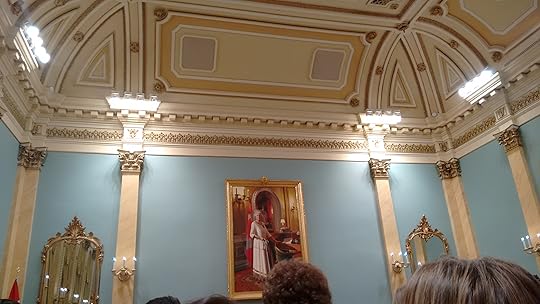
Yes, that is indeed Queen Elizabeth in the painting. There was a piano quartet playing at the other end of the room.
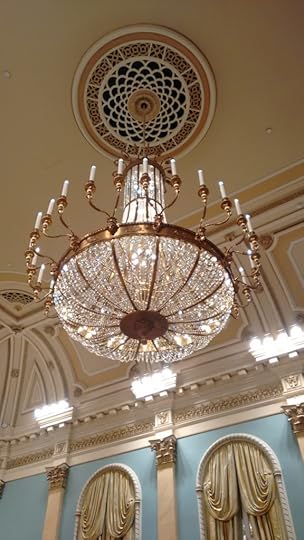
The awards were given and accepted in both official languages, which I continue to find deeply moving. In the present political climate, Canada’s commitments to official bilingualism and multiculturalism appear as wilfully optimistic and constructive endeavours. They make me feel deeply patriotic.
That evening, I was particularly keen to meet Martine Leavitt, winner of the Young People’s Literature – Text category for her novel Calvin. Martine’s acceptance speech was thoughtful and witty and humble – just the qualities that I adore in her fiction. She began by quoting Bill Watterson, the creator of Calvin and Hobbes: “If you ever want to find out just how uninteresting you really are, get a job where the quality and frequency of your thoughts determine your livelihood.” While I respect the truth of this observation, I am so grateful that writers like Martine manage to direct their most interesting thoughts into work they share with us.
The gala itself was utterly luxurious: simultaneously deeply feudal and pleasantly corrupting. Even now, several days after the fact, I find myself highly ambivalent in my response to it. I now know what it feels like to be Cinderella at the ball, or Elinor Dashwood at that fancy London party. It was also marvellous, if unintentional, research for writing a high-society scene. The food was lavish (tasting-size portions of dozens of luxurious things), the surroundings opulent. It was a meticulously constructed fantasy of an old order in which everybody knew his or her place and, for once, I was among those whose only job was to be pleased.
 The library at Rideau Hall
The library at Rideau HallI can see how one could so easily slip into such a comfortable place. It wouldn’t take long to grow accustomed to being honoured and served, or to become amnesiac enough to fully identify with that position of ease. I also began to feel a bit like a lab rat in a test: there was a particular mirrored door through which waiters arrived, bearing trays of hors d’oeuvres. After a couple of dozen trays have appeared, it’s a bit surprising when they stop.
 The Pauline Vanier room is furnished entirely with things made in Canada, including paintings by Norval Morisseau and Emily Carr.
The Pauline Vanier room is furnished entirely with things made in Canada, including paintings by Norval Morisseau and Emily Carr.There’s a deep, childlike pleasure in having your comfort anticipated (“Would you like an umbrella?” “Oh. It must be raining.”); to hand your food-stained plate to a person who appears delighted to take it from you. And if you were routinely addressed as “Excellency” (as the Governor General and spouse are), how long would it be before you came to believe in that too, however unconsciously?
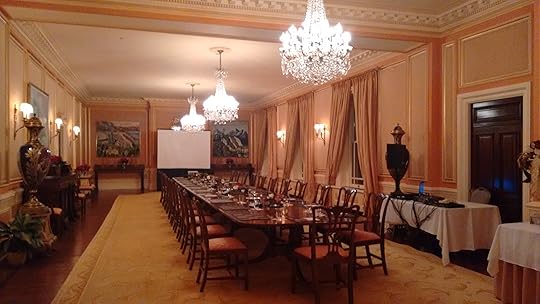 A dining table set for 24
A dining table set for 24Later in the evening, we were offered a tour of a more private wing – one which is not usually open to the public. As a history nerd and professional nosy person, how could I resist? But it was even more interesting than I’d anticipated. You see, I grew up understanding that the Governor General is the Queen’s proxy in Canada. But that knowledge was always purely theoretical. What I didn’t appreciate is how Rideau Hall enacts that position in a concrete way: merely walking into the building is a confrontation with vested power.

In the large drawing room pictured above, that power is even built into the cornices of the room: after the death of Queen Victoria, the ornamental mouldings in most rooms were re-done in a more “masculine” style, the better to reflect the new male monarch, Edward VII.
My favourite part of the tour involved the greenhouses. There are five in total, although we saw only one.
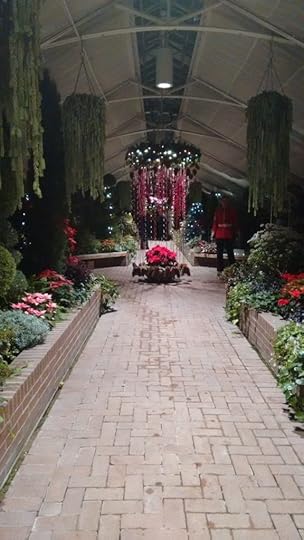 Greenhouse with festive decorations
Greenhouse with festive decorations The festive decorations included little plastic dinosaurs!
The festive decorations included little plastic dinosaurs! The greenhouses supply all the floral arrangements used at Rideau Hall and a couple of other places.
The greenhouses supply all the floral arrangements used at Rideau Hall and a couple of other places.I’ve been wondering what it would be like to feel less ambivalent about the whole event: to fully give myself over either to the fantasy of being a “distinguished guest”, or else a straightforward urge to burn the place to the ground. Are we all merely “passing”, knowing that our ancestors would have been clearing dishes and holding umbrellas? That mine would have been further excluded by racism? I suppose you could legitimize this particular party because it’s a celebration of excellence in the arts and its guests “earn” their invitations through their work. But that’s just a handful of evenings in the calendar. What about the others?
I don’t know yet. Maybe I never will. But my god, it was a great party.
November 29, 2016
from Monsoon Season
Hello, friends. Today, I thought I’d share with you another snippet from my work-in-progress, Monsoon Season.
This scene takes place in November 1945. At this point, the Second World War is over (Japan surrendered in August 1945) and the British have resumed their control over the colony of Malaya. The temporary government is called the British Military Administration (BMA), but it’s more popularly known as the Black Market Administration: rampant corruption and unchecked inflation are causing profound suffering to a population only just “liberated” from Japanese occupation.
Life in the towns and countryside is both desperate and dangerous. Life in the camps of the Communist guerrillas is those things and more. Before the war, the British arrested union organizers and Communist Party members as enemies of the state. During the war, the British allied themselves with Communist guerrilla soldiers. Now, no one can predict how the BMA will treat their recent allies.
In this scene my narrator, a Chinese-Malayan guerrilla and translator named Chen Liling, talks to her friend Ah Lim.
10 November 1945
The Malayan People’s Anti-Japanese Army camp at Tanjong Malim
It’s to near-universal surprise that Ah Lim returns to the guerrilla camp. She was officially on holiday for the past three weeks, visiting her family in Ipoh, but only the most idealistic and unobservant of comrades expected her to see her again. Yet here she is.
I show her what I’ve been doing in the sick bay, which is nothing of substance. How could I, lacking medicines and adequate food? But I stay nonetheless, until we’re alone together amidst our sleeping patients. Then I ask, “Why did you come back?”
She doesn’t hesitate. “It’s hell out there. Maybe worse than under the Japanese.”
“How?”
“No decent jobs. No food, except on the black market. No money to buy black-market food. Half the country is dying of starvation. The other half are trying to kill each other.”
“Is that so different from life here?”
Her mouth twists. “At least we have a sense of purpose. A sense of unity. Out there, nobody trusts. Everybody’s trying to see what their neighbours have and how they can take it from them. The British come rounding up gangs for forced labour, for rebuilding. But people can’t work if they’re starving.” She stops, swallows, and suddenly more words are propelled from deep inside her. “You should see the children, Ah Chen. They look okay, maybe a little skinny. Then you realize that the four-year-old in front of you is actually nine, and he can’t remember a time in his life when he had enough to eat. People try to grow vegetables but the only fertilizer they can find is human shit, so they use it anyway and take their risks with an epidemic because they might die of cholera but they will definitely die without another mouthful of food.”
I close my eyes. I want her to stop. But this horror is so much less than I deserve.
And from here on, things get spoiler-y. Hope you have a lovely week, despite what I just posted.
P.S. I’m planning to stop blogging at the end of 2016. If you’d like to keep in touch, please consider signing up for my newsletter.
November 22, 2016
Looking ahead, part 3
Hello, friends. Did you know that I’ve been writing this blog since September 2009, and that there are 380 posts in total? No? Me neither! I had to check.
I’ve been looking back because I’m starting to look ahead. I’ve decided to wind down this blog at the end of 2016, in order to make more time for other kinds of writing. Published posts will stay up and I’m planning to keep in touch with readers through my brand-new occasional newsletter. You can sign up for it by clicking here, or by scrolling to the sign-up form at the bottom of this page.
In my five remaining posts, I’ll share one more excerpt from Monsoon Season (which is cracking on very nicely indeed) and hopefully some photos from the Governor General’s Awards gala at the end of this month. I’m so excited to meet Martine Leavitt! And if you have questions for me, free to comment here. I’ll answer any queries in one fell swoop.
Thanks for reading along each week so far, and I hope to stay in touch!
November 15, 2016
An interview with Arushi Raina
Hello, friends. My last post for the History Girls is now live!
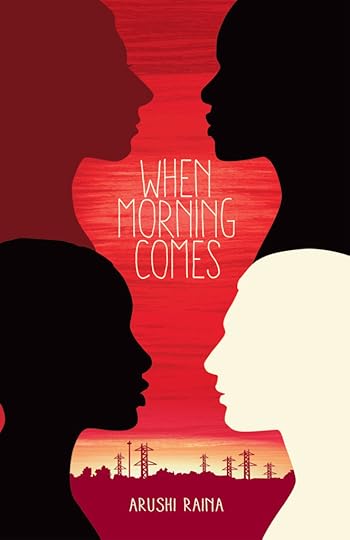
In it, I interview the wonderful debut author Arushi Raina about When Morning Comes, her novel about the Soweto Uprising of 1976. Please do read it!
November 9, 2016
Looking ahead, part 2
Hello, friends. I’m sorry this post is late. I couldn’t bring myself to blog yesterday (November 8), with the US election still an open question. And it’s taken me some time today to absorb the first implications of the result. There’s no joy in being part of a stunned population of international observers.
Nick and I talked about the future before work this morning. We felt rattled and somewhat bleak when we began, but we came away with some initial plans and resolutions:
Build friendships across political lines and social distinctions/barriers. It’s always easier and more comfortable to surround ourselves with people who are a lot like us. But we have an ethical imperative to extend our comfort zones, to expand our views, to better understand how people unlike us think and feel.
Help Americans who will be oppressed and endangered by changing laws and new political decisions. For me, today, this takes the form of donating to Planned Parenthood and Standing Rock. But I’ll keep thinking about this.
Keep working for greater equity in our own country and our own community. The US election is a spectacular version of things that have happened in other places (eg Brexit, Rob Ford’s tenure as mayor of Toronto) and things that will continue to happen.
Listen. Really listen.
Wherever you are and whatever your political persuasion, I hope you’ll agree that peace and community are worth working for.

